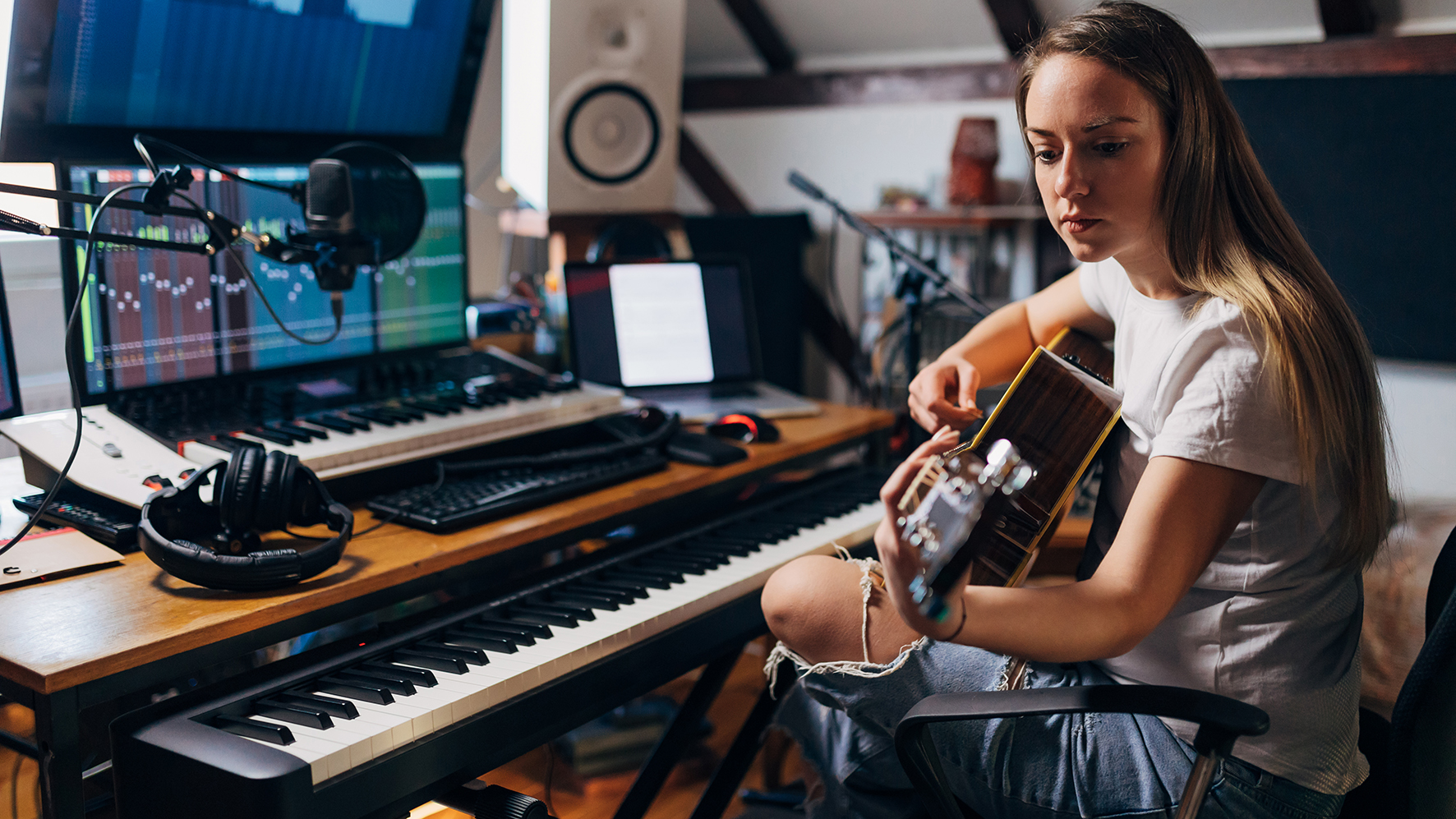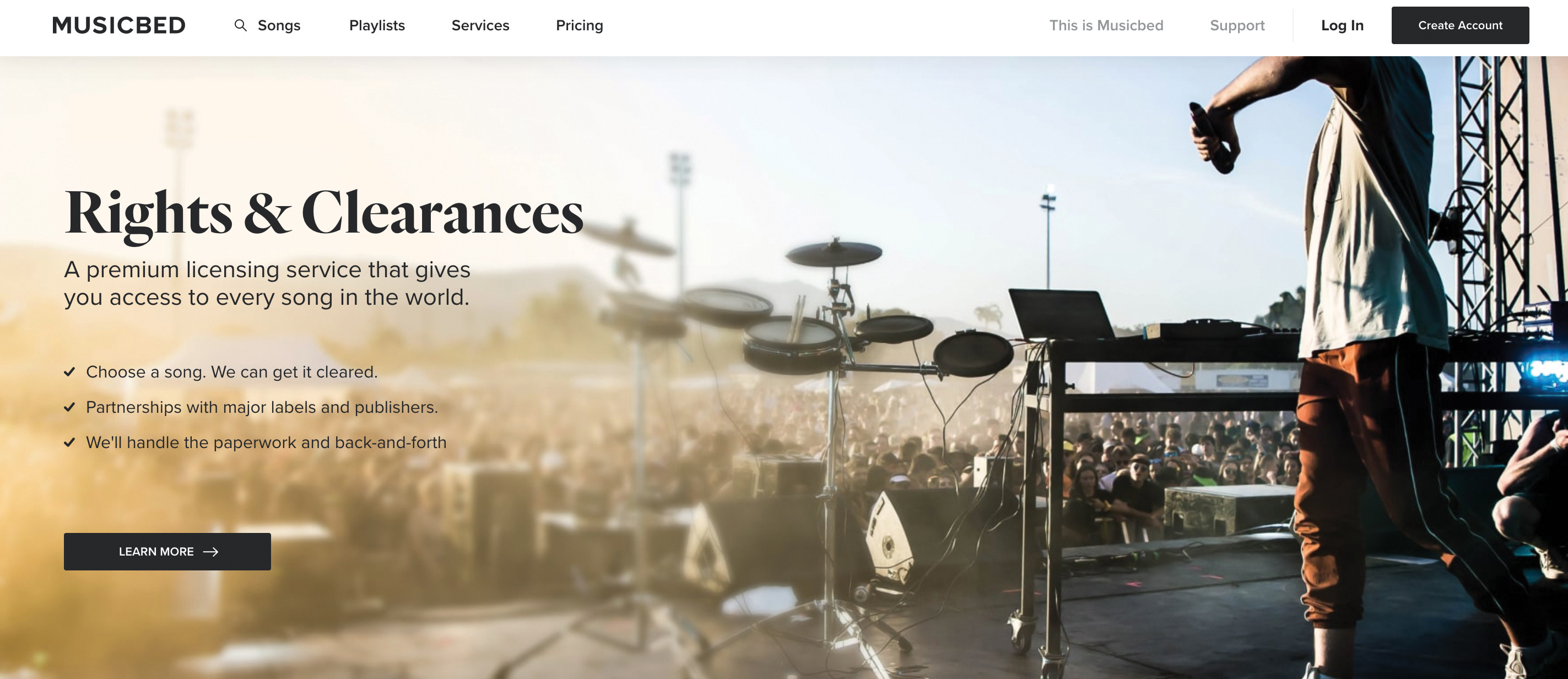How to get started (and get paid) writing music for sync licensing
Sync licensing and production music creation can be a stable route for jobbing musicians, but it can be a tricky world to navigate for those not familiar with the details

Though working on improving your creative processes never hurts, you’ve probably not considered that among the many forgotten old tracks and unfinished projects on your hard drive, it’s totally possible that there’s some perfectly sync-able material just waiting to be unearthed.
Sync licensing companies offer the means to offer up your roster of tracks to music supervisors and creatives who spend their time constantly on the hunt for the right material to fit their films, TV shows, adverts and games. But is it really as simple as uploading your tracks, and waiting for the royalties to roll in, as your unfinished jam from 2017 appears on an episode of Stranger Things?
Well, no. As with all matters licensing-related, there’s a lot to get your head around before you open up your musical wares. Many companies are set-up to expand their large repositories of what is dubbed production music, which can then be accessed by professionals who work alongside music supervisors to find cues and mood-labelled tracks for their projects.
Alternatively, there are those that work with you, and help with generating placement opportunities for your work. They will negotiate the fee and often thorny details of rights ownership on a case-by-case basis.

Typically, artists will grant a label or a production music repository (such as Music Gateway, Artlist, Soundstripe or Marmoset) the exclusive rights to licence their track, meaning nobody else can try to get those tracks on screen but them. If you’re the sole composer and producer of the track, then you’ll be the sole rights holder by default, owning both of the two major copyrights.
The ‘composition’ rights indicate who owns the intellectual property behind the song itself, while the ‘recording’ rights pertain to that particular version/recording of the track. You’ll typically be able to keep these when working with a sync library, yet their role as the ‘publishing administrator’ of the track(s) in question nets them an agreed-on percentage of any income the track generates.
With this in mind, let’s think about how we approach actually making production music. While there’s no reason to be any less inventive, you’ll want to write to a more general idea of a tone.
Want all the hottest music and gear news, reviews, deals, features and more, direct to your inbox? Sign up here.
Most production music archives are vast, and are tagged with numerous keywords that usually align to a mood. Keep this in mind, and try to write numerous pieces around the same thematic objective. For example ‘sad’, ‘optimistic’ or ‘ethereal’. You don’t want to be handing over multisectioned pieces with a shifting or ambivalent mood.
You’re trying to create something that will work for a variety of different situations - but at the same time trying to avoid the result sounding like musical wallpaper
Speaking to PRS for Music, production music composer Melody Girl said one of the greatest challenges was crafting music that could potentially suit a wide-range of projects, yet maintains character. “You’re trying to create flexibility in the music - something that will work for a variety of different situations and nuances - but at the same time trying to avoid the result sounding like musical wallpaper.”
To be successful writing production music, you really need to break out of your own musical comfort zone, and try working in different genres, or moods you’ve previously not delved into. It stands to reason that the more tracks you have out there, the higher the likelihood that they will be used.

Most production music composers submit full albums to labels and agencies, as opposed to standalone tracks. These types of records usually keep to a tight theme, with a range of options for music supervisors to navigate through and find the right fit. Aim to have a healthy output of production music albums, yet make sure you demonstrate a consistent musical identity.
Though some commercial sample libraries can bring weight and sophistication straight out of the box, using their presets might sound a little unoriginal
On a housekeeping note, you need to make sure you keep every single project for every track securely saved, as you might be requested to submit shorter versions (or a tightly-timed version that better fits the specific scene it’s scoring) You might also need to remix, or remove, key track elements.
Though some commercial sample libraries can bring weight and sophistication straight out of the box, using their presets might sound a little unoriginal, particularly if you consider that there’s likely to be many other people out there leaning on libraries like these to do the heavy lifting.

Those who work in the industry are therefore very likely to recognise the tell-tale signature of commercially available libraries. So, using these dry samples on final projects generally isn’t advised, not without significant processing at any rate.
Depending on how many tracks get picked up, writing production music could form the bedrock of a very healthy income
Finally, for budding production music composers, make yourself a rigid plan and schedule. Depending on how many tracks get picked up, writing production music could form the bedrock of a very healthy income. So if you want to get into the game, you’ll need to treat it as a disciplined job.
Have clear objectives and set yourself a timetable for completing albums and sync projects. Try not to write loosely, and instead concoct a word-based roadmap of emotions you want each track to hit, this can give you the direction that you’re missing out on by not working with visuals.



I'm Andy, the Music-Making Ed here at MusicRadar. My work explores both the inner-workings of how music is made, and frequently digs into the history and development of popular music.
Previously the editor of Computer Music, my career has included editing MusicTech magazine and website and writing about music-making and listening for titles such as NME, Classic Pop, Audio Media International, Guitar.com and Uncut.
When I'm not writing about music, I'm making it. I release tracks under the name ALP.